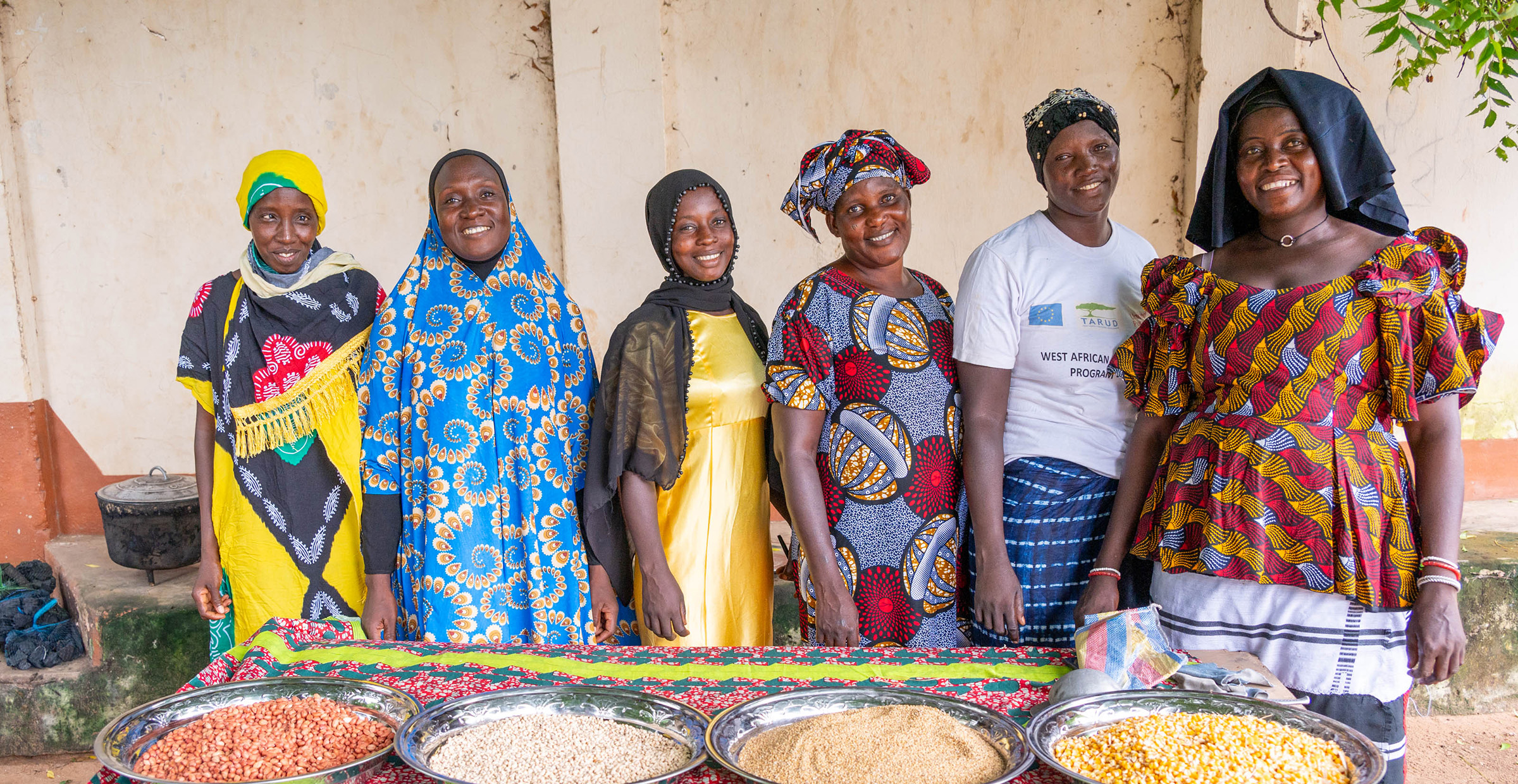Adding value to local crops in The Gambia

The people of The Gambia like to start their day with a bowl of porridge, which they call “mono” in their local Mandinka language. But the processed porridge they buy in the market isn’t very nutritious.
As part of ICBA’s five-year project titled “Improving Agricultural Resilience to Salinity through Development and Promotion of Pro-poor Technologies” (RESADE), members of the Jahuur Farmers’ Cooperative attended a training session provided by the Gambian National Agricultural Research Institute (NARI) in collaboration with Food Technology Services of the Department of Agriculture to learn how to make their own “fortified” porridge.
Through (RESADE), ICBA is working with national agricultural research systems in Botswana, The Gambia, Liberia, Mozambique, Sierra Leone and Togo to improve agricultural production and productivity and increase incomes of farming communities, particularly of women, in salt-affected agricultural areas.
RESADE is implemented in partnership with ICBA and is funded by the International Fund for Agricultural Development (IFAD) and the Arab Bank for Economic Development in Africa (BADEA).
“Most of the families in urban Gambia purchase processed porridge,” said Kaddijatou Jawneh, a Principal Research Officer with NARI. “We taught them how to add value to four locally grown crops – maize, pearl millet, cowpea and groundnut – and make their own porridge.”
She added: “We sought not only to help the communities add value to crops they already grow, but also to increase the nutrition of the porridge they eat daily by using cereal-legume complementary food”.
The fields surrounding Jahuur are abundant with cowpea, millets, groundnut and maize. If they have surplus after harvest they will sell the unprocessed crops to the local markets. “Our training focused on maximizing the value of those crops,” said Kaddijatou. “We taught them not only how to make a nutritious product but also how to package and market it to maximize its value.”
In addition to increasing family income, the porridge increases family nutrition. The porridge recipe is based on creating complementary foods which combines plant sources, like proteins and carbohydrates, to achieve a better amino acid balance than either would have alone. Because of differences in amino acid make-up, when plant sources are combined, the strengths of one plant make up for the deficiencies in another. And that means a millet porridge combined with some cowpeas becomes much more nutritious than eating either by itself.
The training sessions at the Jahuur Farmers’ Cooperative were just a starting point. “Learning is a continuous process where people exchange ideas,” said Kaddijatou. “We hope now that members of the cooperative and conduct demonstrations and extend their knowledge with neighboring communities.”